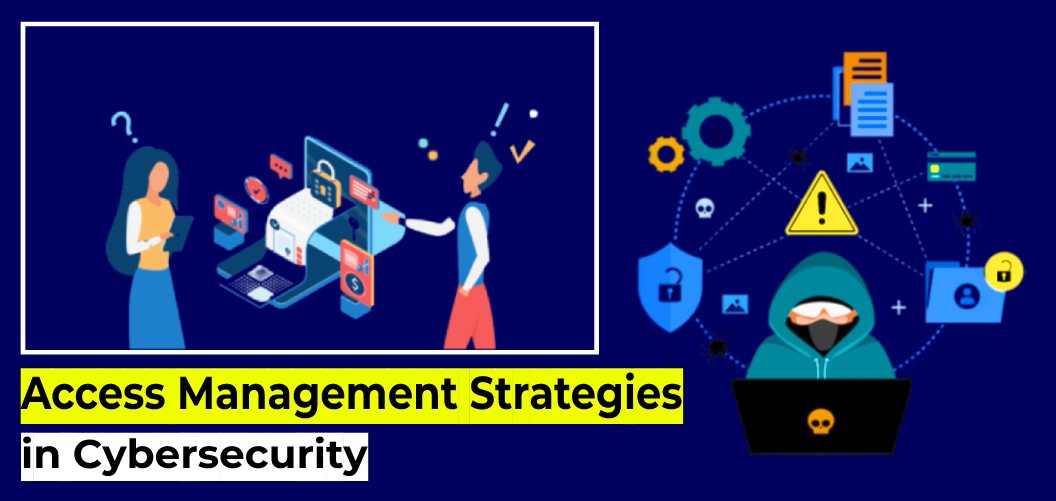According to a recent Verizon study, 63% of confirmed data breaches are due to the use of weak, stolen, or default passwords. There is a saying in the cybersecurity world that “no matter how good a chain is, it is only as strong as the weakest link.” They typically use phishing attacks to infiltrate organizations. At least he tricked one person into being tricked into that organization, and from then on things are serious. Stolen credentials are used to install backdoors, install malware, or exfiltrate sensitive data. All of these result in significant losses for businesses. As such, Identity and Access Management (IAM) is a combination of policies and technologies that enable organizations to identify users and provide appropriate forms of access when needed. The market is exploding with new applications and the demand for companies using these applications is increasing dramatically. Services and resources to access can be specified in IAM. IAM does not provide replicas or backups. IAM can be used for many purposes. B. To control individual and group access to AWS resources. With IAM policies, you can easily manage employee and system permissions to ensure the least privileged permissions. AWS IAM is a global service.

Perform Application Portfolio Inventory:
Application Portfolio Management (APM) is a kind of framework that manage companies IT software applications and software services. APM provides organizations with software applications and data warehouse managers to illustrate the business benefits of each application.
- Step 1: Apply the CIS Critical Security Controls
- Step 2: Document and categorize your business processes
- Step 3: Identify Information Systems and Data Assets
- Step 4: Determine what data can be accessed by/through each system
- Step 5: Define Permissions Objects-data access rights of employees, contractors, suppliers, and customers.
Multiple User Constituencies:
- Develop a rights-based strategy that conveys rights to the appropriate level of access -understand and communicate your business strategy Identify who is responsible for access management decisions
- Evaluate approval policies and develop an approval chain based on organizational mission and business mission statement.
- Identify user-friendly mechanisms that enable users to be critical to the operations of the organization.
- Establish a process for effective communication related to innovation, strategy, and direction.
- Develop processes for communicating risks associated with the business continuity plan.
Comparison of Architecture and Consumption:
|
Architecture |
Consumption |
|---|---|
|
Architecture is the set of components and resources that enable security to function |
It refers to the techniques and methods for placing hardware and software components to promote security. |
|
This is described as looking at a resource like a network monitor or security software program in the context of the broader system. |
Network security Consumption aspects include handshakes and authentication. |
|
The process of turning business needs into practical security requirements is known as architecture |
When an architect writes out plans for a building, it’s called cyber security by design. The most important security elements are there from the start. |
|
It also includes identifying and assessing potential threats and vulnerabilities, as well as recommending or implementing appropriate risk mitigation security procedures |
Applying concepts and practices that make it more difficult for attackers to corrupt your data or systems is what developing with security in mind entails |
|
Security concepts, procedures, and models that are supposed to match your objectives and keep your company safe from cyber threats |
These elements include threat identification, system and process mapping, risk assessment, security policy formulation, physical and technical controls installation, personnel training, and security activity monitoring |
Adjacent IAM Technology:
Access management technology can provide a wide range of security and authorization functions. In particular, it is important to consider whether any existing systems that already require access management are available to be used as an adjunct service. Protect the operational business criticality of the system: Access control plays a significant role in protecting the operational business criticality of systems by identifying only users who should have permission to access specific objects and functions in the system. Use access management to govern application security: Access control is a critical component of software security that enables and protects the confidentiality, integrity, and availability of data. Limiting and monitoring access to application functions, at both the system and the database layer, is often critical to protecting an application’s overall security posture. Adopt an IAM service approach that aligns with your business processes: An IAM service approach allows organizations to tailor their IAM strategy in a way that fits their business processes. There are many areas where business process improvements can be made with respect to information operations when IAM technologies and services are considered early on in the development life cycle.
Access Management Practices:
Without a comprehensive understanding of access management practices and the relationship between IT and cybersecurity, organizations will not be able to achieve significant progress in cybersecurity. Access management is an effective answer to cybersecurity issues because it is designed to have a detailed understanding of the required level of access for every user-level action, as well as for data-level actions. Access management activities can be set up based on different focus areas including data classification, user roles, policies and rules, control mechanisms, and target systems. In addition to that, access management also contributes to cybersecurity by allowing an organization to have better control over who has access to information and data quality. In turn, the organization would be able to protect its assets from any harmful actions that could be carried out by using unauthorized data. Access management is not enough by itself. It requires other security measures such as user identification, authentication, and authorization. Achieving a successful access management strategy in cybersecurity requires a holistic integration of multiple technologies such as access control technology and identity management technology. The use of these technologies in conjunction with one another will significantly improve the performance of your business in the cybersecurity domain.




